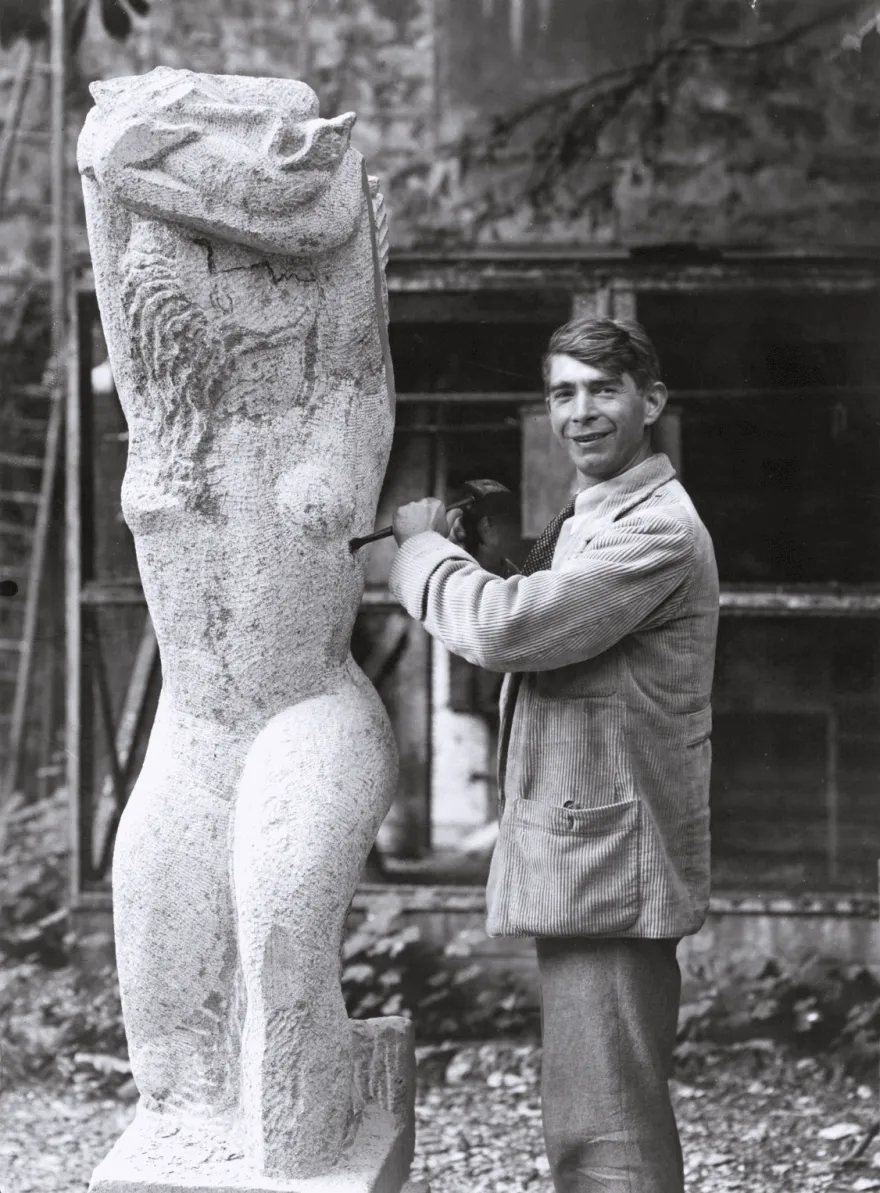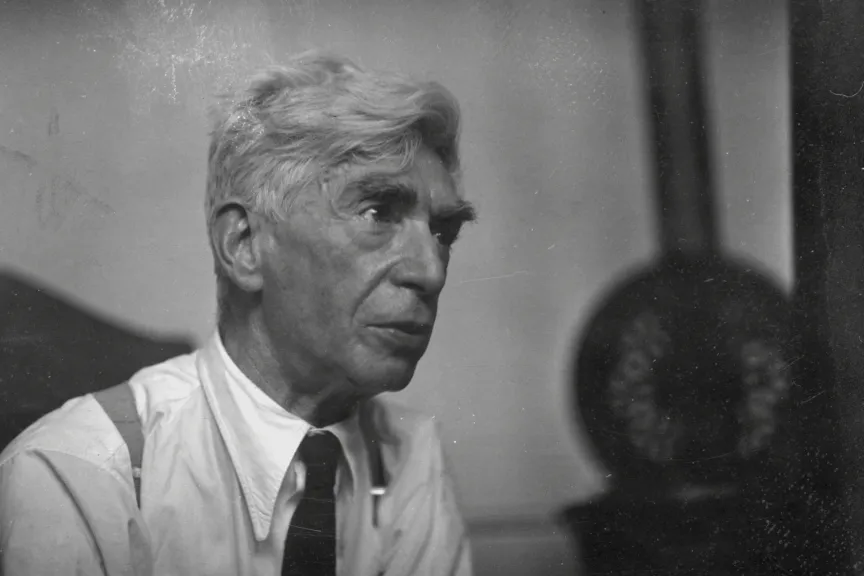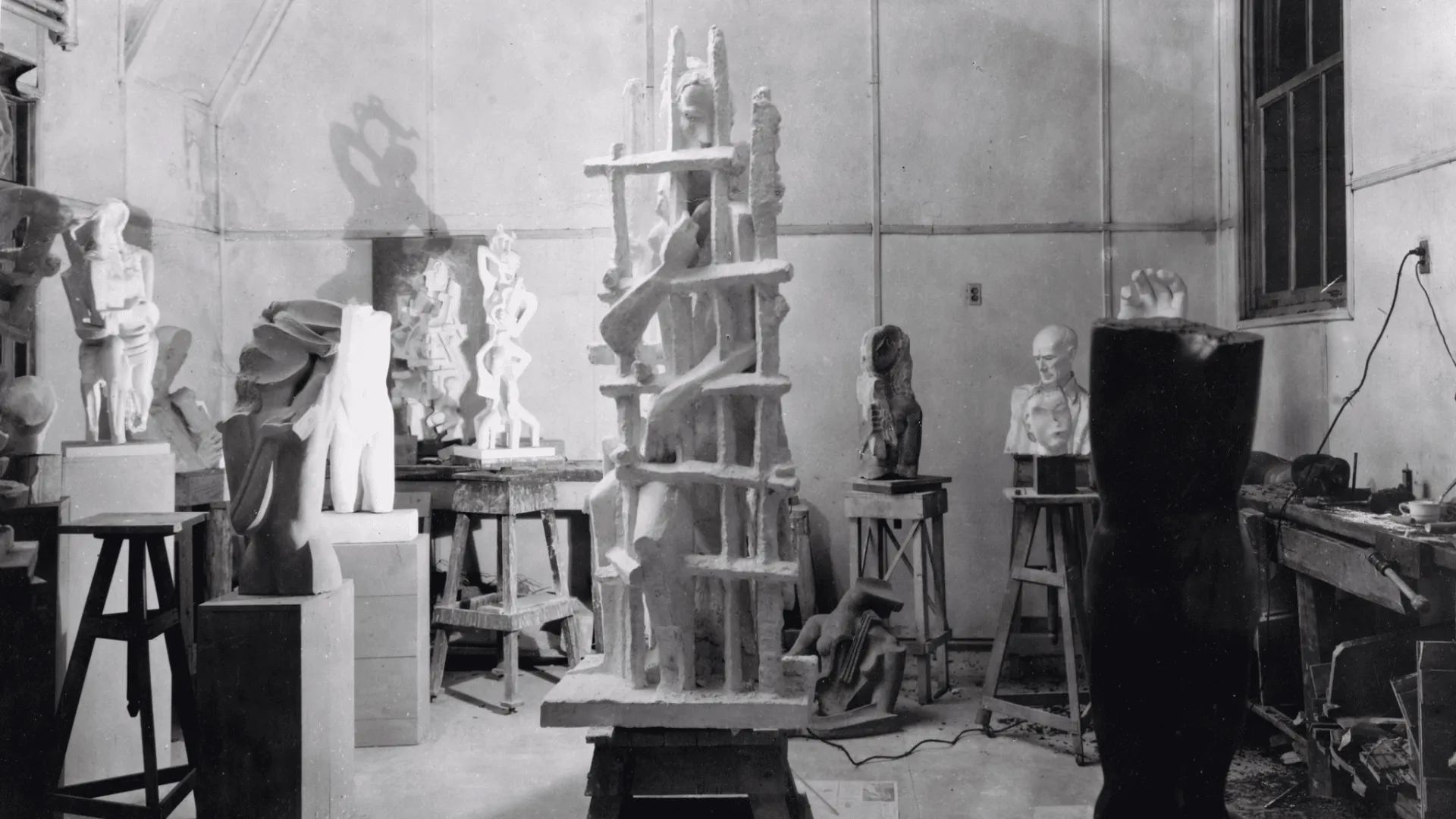The carved work
A sculptor recognised from the 1920s for his practice of direct carving, of wood (Samson and Delilah, the Prophet) and of stone (Woman with a Mandolin, Motherhood), Zadkine subscribed to the early 20th century primitivist trend and search for the avant-garde. “I think that the sculptors of my generation such as Gaudier-Brzeska, Villon, Archipenko, Brancusi, Lipschitz and myself can be considered as upholders of the ancient tradition of those stone and wood sculptors, who having left the forest, gave free rein to their dreams of fantastical birds and large tree trunks." After a short Cubist interlude devoted to the geometrisation of forms (Woman with a Fan, Accordion Player), he then headed towards a reinterpretation of Antiquity as demonstrated by his interest in the 1930s for mythological themes (Rebecca, Niobe) and the groups sculpted in bronze (The Birth of Venus). In 1938, he took on four projects for monuments to poets, Apollinaire, Jarry, Lautréamont and Rimbaud. After the war and the Monument to the Destroyed City, the figure emblematic of human pain erected in the port of Rotterdam in 1953, his work developed in the direction of Baroque expressionism. “Emotion! Humanity! …The object created by the sculpture must arouse emotion in the onlooker". In this respect, Zadkine is considered a pioneer of the introduction of modern art into public spaces. The fusion of the human and the vegetal became one of his preferred themes, giving rise to monumental works such as Orpheus and the Human Forest. In 1955, Zadkine produced several studies for the order for a Monument to Van Gogh which was to be erected in Auvers in 1961, other monuments being created for Wasmes, Zundert and St Rémy de Provence.
Although the human figure had always been at the centre of his work, in his last sculptures designed for architectural purposes, Zadkine set off at the end of his life down a new route devoted to abstract forms, networks of arabesques and interlacing. The annotated catalogue of Zadkine's sculpted work listed 593 sculptures. They were divided between wood (131), stone and marble (112), clay (132), plasters and bronzes.



The graphic work
The volume of graphic work, drawings, gouaches and watercolours, with 1,200 works listed to date and the annotated catalogue currently being drawn up, bear witness to the sculptor’s attachment to this mode of expression.
“Draw”, he confided to his wife Valentine. “It's only drawing that can get you back on your feet. You can't give in to boredom or sadness when you're drawing." In the early days, Zadkine lived more easily from selling his graphite drawings, executed on the spot, than from selling his sculptures. Enlisted during the Great War, assigned to the Russian ambulance corps and then wounded, he produced a remarkable collection of forty or so works on paper, drawings and watercolours, depicting barracks, the wounded and hospitals.
In the 1920s, he produced a large number of gouaches: on his return to Quercy, he turned his attention to rural and village scenes, followed next by figures of nudes and faces, strongly structured by colour. Around 1928, he was inspired by Antiquity to create mythological scenes also enhanced by colour. In the 1950s, he produced an enormous number of ink drawings of groups of figures, very similar to the sculptures of this era.
The 1960s saw the emergence of abstract gouaches and drawings where the human figure was encircled by a network of lines.

The illustration work
With strong links to the Parisian literary world and himself a poet, Zadkine devoted almost half of his engraved work to the illustration of books and poetry magazines. In 1914, he illustrated the poems of Vera Inber, Le vin triste, published in Paris in Russian, with six engraved pieces of wood. In 1919, two wood engravings were reproduced in the magazine Les soirées de Paris to which his friend Jean Cassou contributed.
But it was in the 1960s particularly that he developed this type of work. The publication of the album Les Travaux d’Hercule (The Labours of Hercules) brought together 28 of his lithographs to illustrate Euripides’ text, based on the drawings created during his exile in New York in 1943. One year later, he took part along with six major contemporary artists in the illustration of l’Apocalypse de Saint Jean, contributing three etchings produced in 1930 for a non - completed projet.
He also endeavoured to illustrate the poems of his friends, Pierre Albert-Birot, Claude Aveline and Robert Ganzo … In 1967, he engraved ten etchings for 7 Calligrammes d’Apollinaire.

